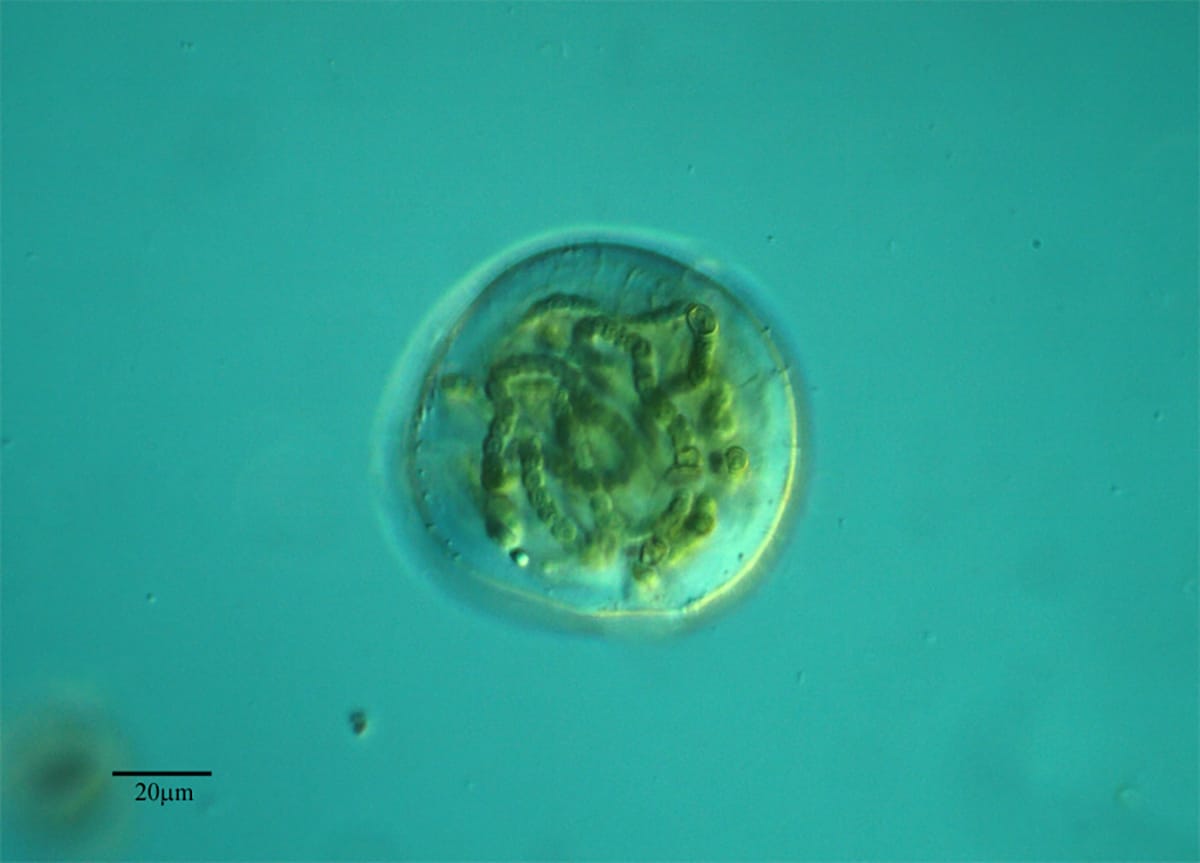
Surely you already know that there are many beneficial bacteria for various ecosystems. As well, Rhizobiums are one of those "good bacteria." Thanks to them, many plants, such as legumes, can grow and develop in soils that lack an essential nutrient: nitrogen.
Due to the help of Rhizobium bacteria in fixing nitrogen, farmers benefit greatly from its use, and consequently also the environment. If you want to know more about these curious bacteria, how is their relationship with legume plants and the benefits they provide, do not miss this article.
What are Rhizobiums and how do they benefit plants?

When we speak of Rhizobium, we refer to a genus of gram-negative bacteria that inhabit the soil and fix atmospheric nitrogen. This genus belongs to a larger group of nitrogen-fixing bacteria, which is called rhizobia. Rhizobiums live in symbiosis with some specific plants, among them legumes, of which we will speak later.
This type of bacteria inhabit the root of vegetables, after an infection induced by the plant itself has occurred through the secretion of a product called lectin. These are proteins that form bonds with sugars. From there, Rhizobiums provide nitrogen to vegetables, that is necessary so that they can live. In return, the plants offer shelter to these bacteria.
Rhizobium characteristics

As free-living organisms, Rhizobiums inhabit the so-called rhizosphere. There they feed on the remains of dead organisms, since they contain a plasmid whose function is to encode information that is essential for the infection of the host plant. Obviously, these types of bacteria have their own characteristics, which we will see below:
- Gram-negative
- Double cell wall layer: While the first is made of proteins and carbohydrates, the second consists of carbohydrates and lipids.
- Prokaryotes
- Mobile bacilli: When the motility test is done, the color they acquire is yellow, and not their original color, which would be purple.
- Aerobes: Oxygen is essential for their growth.
- Beta: Digestion of hemoglobin.
- Optimal development at 25ºC, but can grow at almost any temperature.
- Dimensions: 0.5-0.9 x 1.2-3.0 micrometers
- Has flagella
What kind of relationship is established between Rhizobium bacteria and leguminous plants?

Before explaining the relationship between Rhizobium and leguminous plants, we will first comment on what these vegetables are. Also known as Fabaceae, legumes are a family belonging to the Fabales order. These include shrubs, perennial or annual grasses, and trees. They are easy to recognize, because the fruit they bear are of the legume type and its leaves are usually stipulated and compound.

Regarding the relationship between Rhizobium and legumes, it is a true symbiosis. While plants grow in soils with very low or zero nitrogen levels, bacteria provide this element through their atmospheric fixation. In return, legumes provide a protective and nutritious environment for the Rhizobiums.
Stages of formation
To achieve nitrogen fixation, legume plants must first form nodules. To do this, both bacteria and plants must follow a series of stages that we will discuss below:
- Recognition: As the roots of legumes secrete certain organic materials that stimulate microbial growth and development within the rhizosphere, bacteria can recognize the plant as a suitable partner. Through the protein called ricadesine, the Rhizobiums are able to adhere to the root hairs of the plant, initiating the formation of a nodule.
- Bacterial excretion of nod factors: Once the bacteria have penetrated the root hair of the plant, they excrete nod factors. It is a substance that causes hair to curl. In addition, they pass on genes that will drive nodulation later through cell division.
- Invasion: After invading the root hair, the plants form an infection tube made of cellulose. In it, rhizobia multiply.
- Displacement: From the infection tube, the bacteria travel to the root. In this way, the infection reaches the cells close to the root hairs. There the nod factors stimulate cell division, which ends up forming a nodule.
- Bacteroides appearance: Rhizobiums multiply inside plant cells, eventually turning into swollen and branched formations. At that moment the bacteroides appear. These are deformed bacterial cells that are necessary to fix nitrogen.
- Continuous cell division: After the mature root nodule has formed, both bacterial and plant cells must continually continue dividing.
Services

Obviously, humans have managed to take advantage of this incredible symbiosis at the agricultural level. However, it is also of great importance for the environment.
Regarding agriculture, the Rhizobium cause a considerable increase in nitrogen in soils that lack this element. In addition, leguminous plants, essential at the agricultural level, are favored since they are able to grow in areas where other vegetables could not. Another benefit to highlight is that this symbiosis increases agricultural production, since the level of fixation of atmospheric nitrogen rises. At this point it must be said that nitrogen is one of the essential nutrients for plant growth. Farmers also save a lot of money on nitrogenous fertilizers, at least for legumes, as they are not necessary when there is Rhizobium.

Regarding the environment, it is important to note that fertilizers are one of the main causes of environmental degradation. This is due to the fact that they cause eutrophication of water bodies, the generation of acid rains and soil erosion. Since Rhizobiums prevent farmers from using fertilizers, they are of great help in protecting the environment.
It is clear that there are thousands of malignant bacteria, but the vast majority are good and the Rhizobiums are a clear example of this.